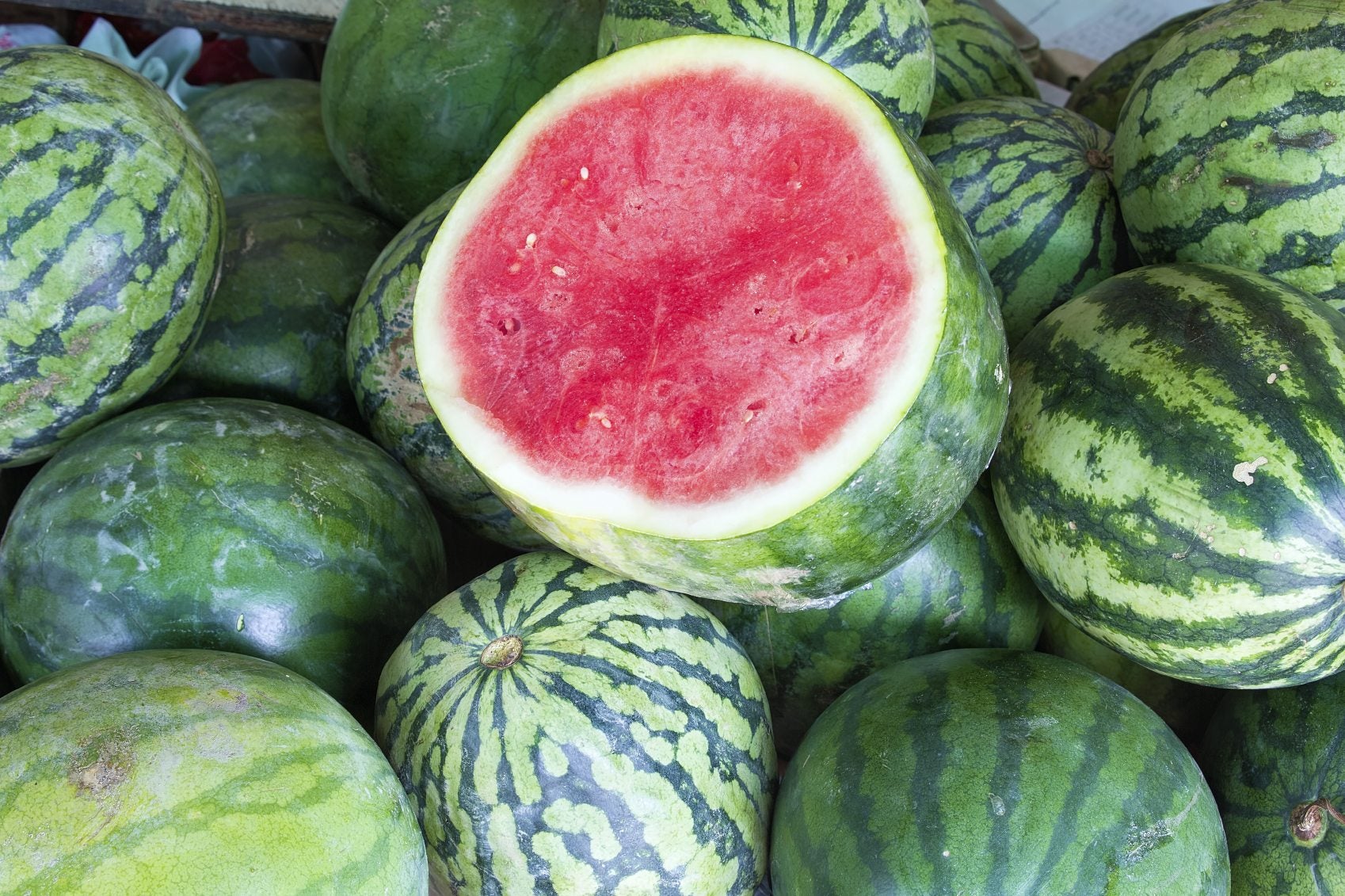Information About Seedless Watermelon Seeds – Where Do Seedless Watermelons Come From

If you were born before the 1990’s, you remember a time before seedless watermelons. Today, seedless watermelon is immensely popular. I think half the fun of eating watermelons is spitting the seeds, but then again I’m no lady. Regardless, the burning question is, “Where do seedless watermelons come from if they have no seeds?”. And, of course, the related query, “How do you grow seedless watermelons with no seeds?”.
Where do Seedless Watermelons Come From?
First off, seedless watermelons are not completely seed-free. There are some small, almost transparent, seeds to be found in the melon; they are unremarkable and edible. Occasionally, you will find a “true” seed in a seedless variety. Seedless varieties are hybrids and are derived from a fairly complex process.
Hybrids, if you remember, do not breed true from seed. You may end up with a mutt of a plant with a mix of traits. In the case of seedless watermelon, the seeds are actually sterile. The best analogy is that of a mule. Mules are a cross between a horse and a donkey, but mules are sterile, so you can’t breed mules together to get more mules. This is exactly the case with seedless watermelons. You have to breed two parent plants to produce the hybrid.
All interesting seedless watermelon info, but it’s still not answering the question of how to grow seedless watermelons with no seeds. So, let’s move on to that.
Seedless Watermelon Info
Seedless melons are referred to as triploid melons while ordinary seeded watermelons are called diploid melons, meaning, that a typical watermelon has 22 chromosomes (diploid) while a seedless watermelon has 33 chromosomes (triploid).
To produce a seedless watermelon, a chemical process is used to double the number of chromosomes. So, 22 chromosomes are doubled to 44, called a tetraploid. Then, the pollen from a diploid is placed on the female flower of the plant with 44 chromosomes. The resulting seed has 33 chromosomes, a triploid or seedless watermelon. The seedless watermelon is sterile. The plant will bear fruit with translucent, nonviable seeds or “eggs.”
Seedless Watermelon Growing
Seedless watermelon growing is much the same as growing seeded varieties with a few differences.
Gardening tips, videos, info and more delivered right to your inbox!
Sign up for the Gardening Know How newsletter today and receive a free copy of our e-book "How to Grow Delicious Tomatoes".
First of all, seedless watermelon seeds have a much more difficult time germinating than their counterparts. Direct sowing of seedless melons must occur when the soil is at a minimum of 70 degrees F. (21 C.). Ideally, the seedless watermelon seeds should be planted in a greenhouse or the like with temps between 75-80 degrees F. (23-26 C.). Direct seeding in commercial enterprises is very difficult. Overseeding and then thinning is a costly solution, as seeds run from 20-30 cents per seed. This accounts for why seedless watermelon is more expensive than regular watermelons.
Secondly, a pollinizer (a diploid) must be planted in the field with the seedless or triploid melons. A row of pollinizers should be alternated with every two rows of the seedless variety. In commercial fields, between 66-75 percent of the plants are triploid; the rest are the pollinating (diploid) plants.
In order to grow your own seedless watermelons, either begin with purchased transplants or start the seeds in a warm (75-80 degrees F. or 23-26 degrees C.) environment in a sterile soil mix. When the runners are 6-8 inches (15-20.5 cm.) long, the plant can be transferred to the garden if soil temps are at least 70 degrees F. or 21 degrees C. Remember, you need to grow both seedless and seeded watermelons.
Dig holes in the ground for the transplants. Place one-seeded watermelon in the first row and transplant seedless watermelons into the next two holes. Continue to stagger your plantings, with one-seeded variety to every two seedless. Water the transplants in and wait, about 85-100 days, for the fruit to mature.

Amy Grant has been gardening for 30 years and writing for 15. A professional chef and caterer, Amy's area of expertise is culinary gardening.
-
 Looking For Plants To Give You The Soft And Fuzzies? Try These 5 Fuzzy Leaf Plant Options
Looking For Plants To Give You The Soft And Fuzzies? Try These 5 Fuzzy Leaf Plant OptionsLovers of texture, drama, silver foliage and tactile plants will adore these special sensory garden additions. These fuzzy leaf plant options will leave you all aglow
By Susan Albert
-
 Get Ready For A Summer Of Hummers! Grow These Full Sun Hummingbird Plants and Flowers
Get Ready For A Summer Of Hummers! Grow These Full Sun Hummingbird Plants and FlowersIf you’re lucky enough to enjoy a sunny backyard, make sure you are maxing out on your pollinator opportunities and grow these full sun hummingbird plants and flowers
By Tonya Barnett